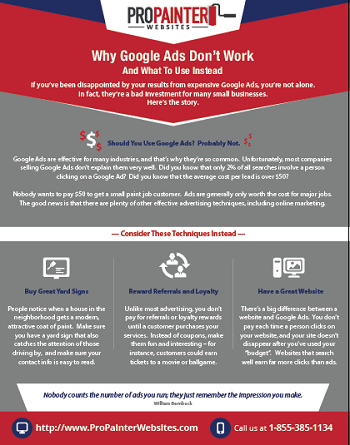Understand How Seasonal Conditions Affect The Success Of Industrial Outside Painting And Discover The Perfect Periods To Guarantee Resilient Outcomes For Your Project
Understand How Seasonal Conditions Affect The Success Of Industrial Outside Painting And Discover The Perfect Periods To Guarantee Resilient Outcomes For Your Project
Blog Article
Content Develop By-Fox Skafte
When you're intending an industrial external painting job, seasonal aspects can make or break your results. You'll intend to think about how temperature level and humidity impact paint application and drying out times. Choosing the appropriate period can guarantee your paint sticks appropriately and lasts longer. But which seasons are absolutely the best for this kind of work? Allow's explore the crucial elements that can affect your task's success.
The Influence of Temperature on Paint Application
When you're preparing a commercial exterior painting project, the temperature can substantially affect exactly how well the paint adheres and dries.
Preferably, you intend to repaint when temperatures range between 50 ° F and 85 ° F. If it's as well cold, the paint might not treat properly, causing issues like peeling off or fracturing.
On the other side, if it's as well warm, the paint can dry out too promptly, protecting against appropriate bond and causing an irregular finish.
You should additionally take into consideration the moment of day; morning or late afternoon supplies cooler temperatures, which can be much more favorable.
Always inspect the manufacturer's referrals for the certain paint you're using, as they often give advice on the perfect temperature array for optimal outcomes.
Humidity and Its Effect on Drying Times
Temperature level isn't the only environmental aspect that affects your industrial outside painting task; humidity plays a substantial role also. High humidity levels can decrease drying out times drastically, influencing the general top quality of your paint job.
When the air is filled with wetness, the paint takes longer to treat, which can bring about problems like bad bond and a greater risk of mold growth. If you're repainting on a particularly damp day, be gotten ready for extensive delay times in between layers.
It's important to monitor neighborhood weather and plan accordingly. Preferably, go for https://house-painters-near-me55319.bloggadores.com/34415609/what-should-you-consider-to-recognize-the-right-painting-contractor-for-your-job between 40% and 70% for ideal drying out.
Keeping these factors in mind ensures your project stays on track and provides a lasting surface.
Best Seasons for Commercial Outside Painting Projects
What's the best time of year for your industrial external painting tasks?
Spring and early fall are normally your best bets. During these seasons, temperature levels are light, and moisture levels are often lower, creating suitable conditions for paint application and drying out.
Prevent summer's intense heat, which can trigger paint to dry also promptly, causing inadequate bond and surface. In a similar way, winter season's chilly temperature levels can prevent correct drying out and healing, risking the longevity of your paint job.
Aim for days with temperatures between 50 ° F and 85 ° F for optimal results. Bear in mind to examine the regional weather report for rain, as damp conditions can destroy your job.
https://jaidenerdmx.bloggosite.com/42311205/a-comprehensive-guide-to-choosing-a-paint-contractor-detailed around these factors guarantees your paint job runs smoothly and lasts much longer.
Final thought
In conclusion, planning your commercial external paint tasks around seasonal factors to consider can make a considerable difference in the outcome. By https://www.architecturaldigest.com/story/how-to-paint-a-diy-wall-mural throughout the ideal temperatures and moisture degrees, you'll ensure better adhesion and drying out times. Keep in mind to keep an eye on regional weather prediction and choose the correct time of year-- spring and very early loss are your best choices. Taking these steps will help you accomplish a sturdy and expert surface that lasts.
